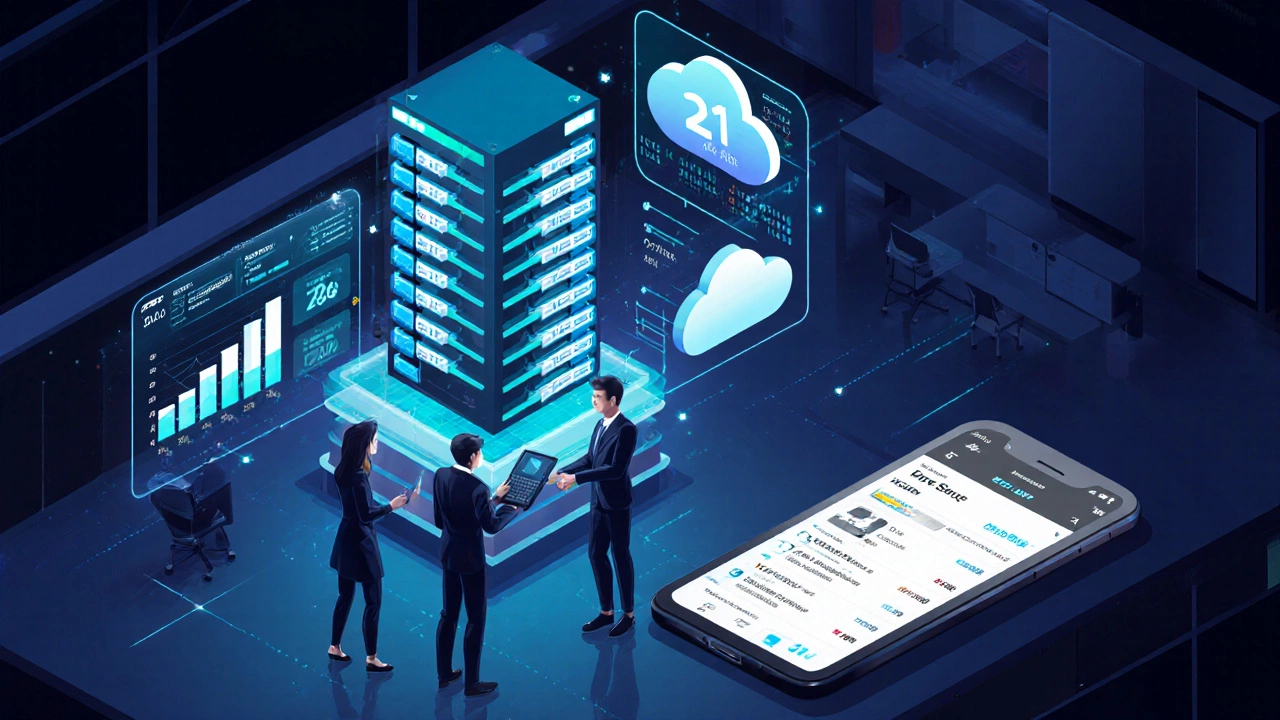E-Commerce Cost Savings Calculator
Calculate Your Potential Savings
Estimate how much you could save by transitioning from brick-and-mortar to e-commerce based on your current business expenses.
Your Estimated Annual Savings
£0.00
Time to Break Even
N/A
Important Note: These are estimates based on industry averages. Actual results may vary based on your specific business model and execution.
Key Takeaways
- E‑commerce expands market reach beyond geographic limits.
- Operating costs drop dramatically compared with brick‑and‑mortar.
- Automation and data analytics boost efficiency and personalization.
- 24/7 availability and mobile commerce increase sales opportunities.
- Rapid testing and scaling reduce business risk.
When you hear E‑commerce is the buying and selling of goods or services over the internet, you might think it’s just another sales channel. In reality, it reshapes how businesses reach customers, cut costs, and grow revenue.
Below we break down the major e‑commerce advantages that explain why more than 2.3billion people shop online in 2025 and why businesses that ignore the digital shelf risk falling behind.
1. Unlimited Market Reach
Traditional stores are limited by foot traffic and local demographics. Online storefront a website or app where customers browse and purchase products removes those borders. A small boutique in Liverpool can now sell to a buyer in Tokyo without opening a second shop.
Key points that unlock global reach:
- Multi‑language support - translate product pages to meet local preferences.
- International shipping integrations - automate customs paperwork and rate calculation.
- Localized payment options - offer local credit cards, digital wallets, and buy‑now‑pay‑later.
2. Lower Operating Costs
Brick‑and‑mortar locations incur rent, utilities, staffing, and inventory overhead. By shifting sales online, businesses can:
- Reduce or eliminate physical storefront rent.
- Leverage drop‑shipping or on‑demand fulfillment to keep inventory low.
- Use automated payment gateways software that securely processes online transactions instead of maintaining cash registers.
For example, a UK fashion retailer cut its monthly overhead from £30,000 to £12,000 after launching an e‑commerce site, saving 60% in fixed costs.
3. Scalability and Flexibility
When sales surge during a flash sale or holiday season, a physical shop hits capacity immediately. An e‑commerce platform can scale server resources in minutes, handling thousands of concurrent visits.
Flexibility also means you can test new product lines without committing to shelf space. If a product underperforms, you simply remove it from the catalog-a move that would require costly clearance sales in a physical store.

4. Data‑Driven Decision Making
Every click, search, and purchase generates data. Data analytics the process of examining raw data to draw actionable insights empowers businesses to:
- Identify top‑selling items and stock accordingly.
- Segment customers by behavior, then deliver personalized offers.
- Optimize pricing using real‑time market trends.
A UK electronics seller used analytics to raise average order value by 18% after introducing bundled recommendations.
5. Enhanced Customer Experience
Modern shoppers expect convenience. Features that improve experience include:
- One‑click checkout powered by saved payment details.
- Real‑time inventory visibility to avoid out‑of‑stock frustration.
- Responsive design for mobile commerce shopping on smartphones and tablets, which now accounts for over 55% of online sales.
Positive experiences translate to repeat purchases and higher lifetime value.
6. Faster Time‑to‑Market
Launching a new product in a physical store can take months: design packaging, arrange shelf space, train staff. Online, you upload product data, images, and pricing, and the item is live within hours.
This speed lets businesses react to trends-think of a sudden surge in demand for eco‑friendly products. Companies that pivot quickly capture market share before competitors catch up.
7. Risk Reduction and Agile Experimentation
Because e‑commerce lowers upfront investment, businesses can experiment with:
- Limited‑edition drops to gauge interest.
- A/B testing of landing page layouts, pricing, and call‑to‑action.
- Different fulfillment models (in‑house vs. third‑party logistics) without long‑term contracts.
These low‑risk experiments provide real‑world feedback, informing larger strategic decisions.
8. Integration with Digital Marketing
Online stores naturally plug into digital marketing promotional activities executed through online channels channels-search engine ads, social media, email campaigns, and influencer partnerships. Each channel drives traffic directly to a product page where the sale can be completed instantly.
Performance tracking (cost per acquisition, click‑through rate) is transparent, allowing marketers to allocate budget to the highest‑return tactics.
9. Comparison: Brick‑and‑Mortar vs. E‑Commerce
| Aspect | Brick‑and‑Mortar | E‑Commerce |
|---|---|---|
| Geographic reach | Local or regional | Global, 24/7 |
| Initial investment | High (rent, fit‑out) | Low‑to‑moderate (website, hosting) |
| Operating expenses | Fixed costs dominate | Variable, scale with sales |
| Customer data | Limited, offline insights | Rich, real‑time analytics |
| Speed to market | Weeks‑months for new items | Hours to go live |
| Flexibility | Low, fixed shelf space | High, endless catalog |
Checklist: Is Your Business Ready for E‑Commerce?
- Do you have a clear product catalog ready for digital presentation?
- Is your target audience active online and comfortable buying digitally?
- Have you selected a reliable payment gateway to process credit cards, digital wallets, etc.?
- Can you handle fulfillment-whether in‑house, dropshipping, or third‑party logistics?
- Do you have a plan for digital marketing and customer support (live chat, email, socials)?
Answering “yes” to most of these questions means you’re positioned to reap the benefits outlined above.
Next Steps & Troubleshooting
Start Small, Scale Fast: Launch a minimal viable online store with a few best‑selling products. Track key metrics-traffic, conversion rate, average order value. Once numbers stabilize, expand the catalog and invest in advanced features like AI‑driven recommendations.
If you encounter issues:
- Low traffic: Re‑evaluate SEO, run targeted social ads, collaborate with influencers.
- Cart abandonment: Simplify checkout, add trust badges, offer guest checkout.
- Fulfillment delays: Review logistics partners, consider multiple warehouses, enable real‑time tracking.
Frequently Asked Questions
How quickly can a small business launch an e‑commerce site?
Using hosted platforms like Shopify or BigCommerce, a basic store can go live in 1‑2weeks. The main tasks are uploading product data, setting up payment, and configuring shipping.
What are the biggest cost savings from moving online?
Businesses typically cut 30‑60% of fixed costs by eliminating rent, reducing staff hours, and lowering inventory holding through just‑in‑time fulfillment.
Can e‑commerce improve customer loyalty?
Yes. Personalized email campaigns, loyalty points, and easy re‑ordering features keep customers coming back and increase lifetime value.
Is my business safe from cyber threats?
Security relies on PCI‑DSS compliant payment gateways, SSL certificates, and regular software updates. Using reputable platforms reduces risk dramatically.
How does e‑commerce affect supply chain management?
Real‑time order data syncs with inventory systems, enabling automated replenishment and better forecasting, which reduces stockouts and excess inventory.


